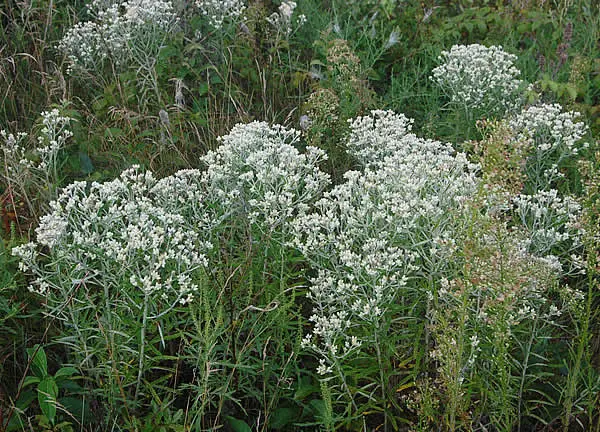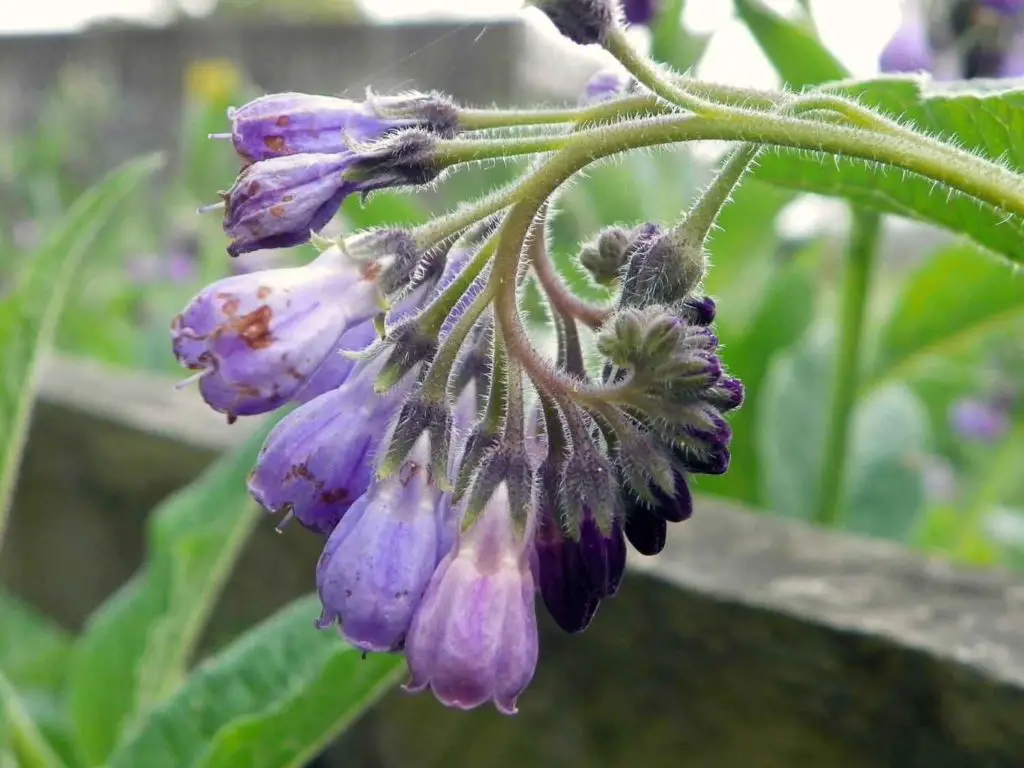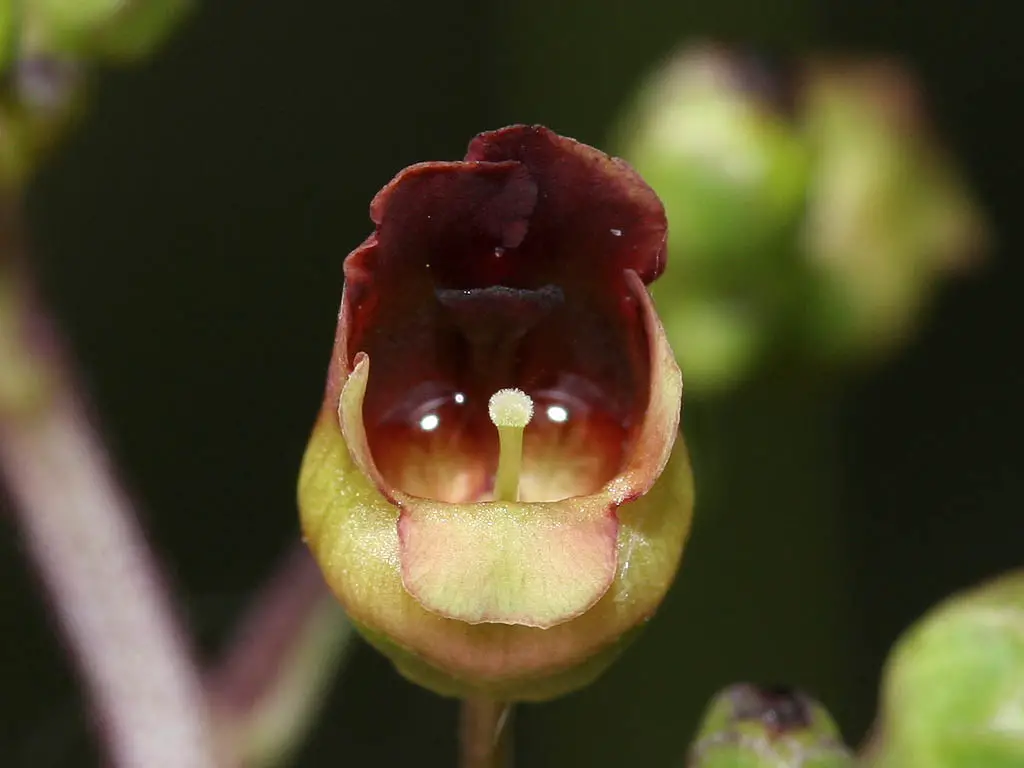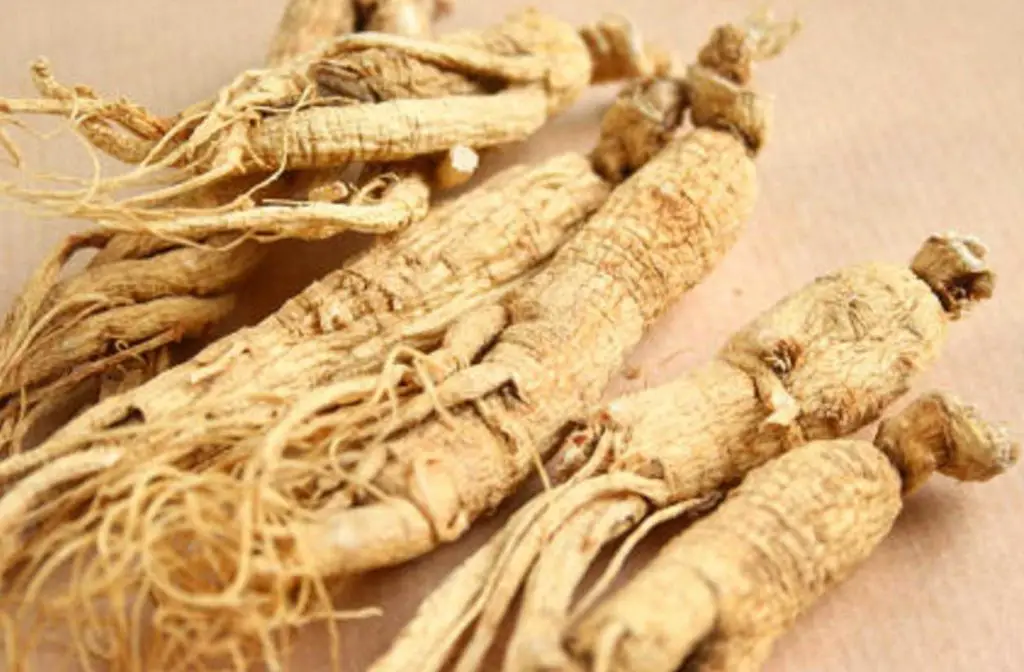What is Gordolobo?
Gordolobo or Pseudognaphalium obtusifolium (formerly Gnaphalium obtusifolium) is known for its many names such as Sweet Everlasting, Rabbit Tobacco, Cudweed, Old Field Balsam, Sweet White Balsam, Indian Posy, Life of Man, Poverty Weed, Fussy Gussy, and Owl’s Crown. [1][2][3]
The standard nomenclature for P. obtusifolium may incite confusion for most locals. In Mexico, natives refer to Verbascum thapsus as ‘Gordolobo,’ which is called ‘Mullein’ in the United States. For the context of this literature, we will refer to P. obtusifolium as Gordolobo.
This herbaceous plant is native to Northern Mexico and most parts of the South Western United States [1]. Gordolobo is an annual or biennial plant [2] which means that its entire life cycle lasts for one to two years.

Gordolobo grows up to one to two meters with alternate leaves. At the top of the plant emerges the white tubular Gordolobo flowers, which bloom around August to November [3]. This plant is mainly characterized by its hairy or wooly stem and flowers [2].
Aztecs use Gordolobo to treat respiratory-related illnesses by decocting the stem and flower of the plant [4]. In addition, they also use decoction to treat various skin conditions [1].

Gordolobo Benefits
Gordolobo is an essential plant to Native Indians and ancient Aztecs [5]. This plant is historically used to alleviate muscle pains, treat respiratory illnesses, and cure various skin problems [1][4].
Asthma and Bronchitis
Various Native American tribes use the decoction of Gordolobo stem, leaves, or flowers to treat bronchitis and asthma [6]. Some historical accounts also determine different Native American tribes stuffing their beddings with dried Gordolobo plant to prevent asthma [4].
A specific study [4] shows that Gordolobo possesses various analgesic and anti-inflammatory substances such as linalool. The presence of these chemicals in dried Gordolobo decoctions suggests that these plants significantly helped ancient civilizations alleviate asthma attacks and other respiratory problems.
Read Also: 15 Demulcents: Natural Herbs that Thin and Relieve, Mucus and Phlegm
Antioxidant and Neuroprotective
In the same study [4], the researchers were able to profile various chemical actives present in the Gordolobo decoction. Of all 17 active compounds identified, pinocembrin and pinostrobin are essential antioxidants and neuroprotective compounds.
Pinocembrin [7] is a known anti-proliferative compound with antimicrobial actions against common fungus (i.e., C. albicans). This compound is also known to possess anti-excitotoxic properties, which can help prevent brain edema and cerebral ischemia.
Pinostrobin [8] is another essential compound found in Gordolobo. This compound is a well-known inducer of antioxidant enzymes. In addition, particular research also suggests that Pinostrobin has anti-proliferative effects.
Antiseptic and Anti-viral
Phenols were also identified in Gordolobo decoctions [4]. This compound is known to be an efficient antiseptic against different microorganisms such as fungi and viruses [9].
Certain historical documentation shows ancient civilizations used Gordolobo decoction as a topical agent [1]. This active compound might provide clarity as to why Native Americans found Gordolobo as an effective treatment against most skin conditions.
In addition, ethyl hexanoate, pinocembrin, and 1-dodecanol, which are known antimicrobial, are also identified among the 17 bioactives found in Gordolobo tea [4].
Anti-inflammatory
According to the same research [4], multiple anti-inflammatory chemicals were identified in Gordolobo beddings. Gordolobo beddings were shown to possess a lot of terpenes such as limonene, B-myrcene, calmenene, and cadelene, which are known anti-inflammatory compounds [4].
The anti-inflammatory properties of Gordolobo make it an effective wound treatment and mild pain reliever.
Although the majority of anti-inflammatory bioactives are found in Gordolobo beddings, ingesting Gordolobo-infused tea is also an effective way to reduce body inflammation [4].
Muscle Relaxant
As stated above, Gordolobo also possesses mild sedatives and anxiolytic compounds [4]. There are also specific reports stating that natives used to chew on dried Gordolobo leaves for relaxation [10].
This calming property of Gordolobo can be directly attributed to y-terpinene, linalool, and various anti-inflammatory compounds.

Gordolobo Dosage
Pseudognaphalium obtusifolium is historically ingested, smoked, or used as bedding. In order to reap the benefit of this herbal plant, it’s vital to follow how the original founders used Gordolobo to treat their sickness.
The dosage used to decoct or smoke Gordolobo varies depending on the patient’s body size, pharmaceutical needs, age, and Gordolobo concentrate. The list below outlines the general dosage reportedly used by most users:
- Tea or decoction: Most herbal decoction guidelines instruct users to boil 1 to 2 grams of dried Gordolobo in a cup of water. The natives also use this decoction on their skin to treat skin-related ailments [1].
- Beddings: There is no specific instruction on how to use dried Gordolobo as bedding. The historical accounts state that natives would stuff their pillows with dried Gordolobo leaves and flowers and sleep on them [4].
- Smoke: Certain tribes used to smoke dried Gordolobo leaves and flowers. Some cultures smoke Gordolobo by incinerating the dried plant and letting the patient inhale the smoke [5]. Other cultures roll and smoke Gordolobo like a cigarette.
The general rule of using herbal medicines varies per culture. However, it’s still critical to speak with a doctor if you plan on using herbal medicines to treat your condition. They can provide you with an accurate dosage estimation depending on your needs.
Gordolobo Side Effects, Safety, Dangers, and Warning
History proves that using herbal alternatives is an effective way to treat common illnesses. However, modern progression in pharmaceutical technology shows that not all herbal medicines are effective in treating certain medical conditions.
It’s vital to seek professional advice when trying alternative forms of pharmaceutical treatment.
Gordolobo is an effective alternative and over-the-counter medicine to treat common coughs and colds [5]. However, there are reports of people suffering from stomach upset after taking medicinal tea [11].
It’s also possible to develop an allergic reaction [11] when you use herbal products on your skin. Gordolobo is an unapproved homeopathic [12], so you need to use it with caution.
In addition, specific research points out that burning Gordolobo leaves and flowers produce styrene [4], which is a possible carcinogenic, as suggested by International Agency for Research in Cancer (IARC) [13].

How to decoct Gordolobo
A decoction is the most preferred method of preparing Gordolobo tea and other hard herbs. You can employ basic decoction steps outlined by the professionals [14].
- Grind the dried Gordolobo plant finely;
- Allow a cup of water to heat and add the crushed Gordolobo;
- Let the Gordolobo mixture boil for 30 minutes or until 50% of the water is lost;
- Cover the mixture with a lid while boiling. This will prevent the bioactives from evaporating;
- Strain the herbs from the decoction. Decoctions are most commonly ingested, but natives are also reported to use the decoction externally.
Where to buy Gordolobo decoction
P. obtusifolium is readily available for everyone. Anyone can purchase this herb from most herbal stores. One of the most common forms of commercially available P. obtusifolium is in a 30mL vial [12].
In addition, P. obtusifolium is also available in tablet and pellet form [15]. It’s critical to keep in mind that these over-the-counter herbal drugs are unapproved homeopathic.
An unapproved homeopathic [16] means that the FDA was not able to assess the over-the-counter drug’s efficacy. This doesn’t necessarily mean that the supplement is ineffective, but there’s no solid data supporting its efficacy.
Final thoughts
Modern medicines are modeled after what our ancestors had to use to survive in their times – medicinal herbs. However, our technology was able to help us push through and innovate more pharmaceutics our medicinal herbs cannot treat.
This doesn’t mean that the era of relying on homegrown medications has passed. In certain circumstances, doctors may even recommend their patients use alternative remedies.
Gordolobo or Pseudognaphalium obtusifolium is one of those historically critical therapeutic herbs [5].
P. obtusifolium has proven its efficacy in treating respiratory-related illnesses, skin conditions, and even muscle pain [4].
The best method of administration with Gordolobo is through ingestion [4]. You may decoct it in a tea or take over-the-counter P. obtusifolium tablets or pellets. Research has also proven that stuffing P. obtusifolium in bedding has proven benefits [4].
Unfortunately, some research doesn’t suggest users burn P. obtusifolium leaves, as it was shown to produce carcinogenic compounds when inhaled [4].
Frequently Asked Questions
Gordolobo vs. Mullein
Gordolobo (P. obtusifolium) and mullein (V. thapsus) is used almost the same. However, they differ in a lot of aspects:
- Taxonomy: P. obtusifolium belongs to Family Asteraceae and Genus Pseudognaphalium. In contrast, V. thapsus belongs to Family Scrophulariaceae and Genus Verbascum [17].
- Flower appearance: P. obtusifolium blooms a white bud-like flower with yellow tips. In contrast, V. thapsus has fully bloomed yellow flowers with five petals [17].
- Distribution: P. obtusifolium is native to Northern Mexico and the Southwestern United States. In contrast, V. thapsus is native to Asia, North Africa, and North Europe [17].
Both medicinal herbs help treat common respiratory problems with anti-inflammatory and sedating effects. However, V. thapsus is also a known component in ear drops for otitis media and externa [18].
Read More about the benefits of Mullein (V. Thapsus) here.
Can you smoke Gordolobo?
Historically, natives were reported to burn Gordolobo and inhale its smoke [5]. Although some people may prefer to use medicinal herbs by smoking or as an inhalant, researchers suggest that this might not be ideal.
Burning Gordolobo was shown to produce carcinogenic compounds, which are dangerous when inhaled [4].
The best way to take a Gordolobo is by decocting it or by taking OTC tablets and pellets. Natives were also known to stuff Gordolobo leaves and flowers into their beddings to help with asthma.
References
[1] https://www.utep.edu/herbal-safety/herbal-facts/herbal%20facts%20sheet/everlasting.html
[2] https://plants.ces.ncsu.edu/plants/pseudognaphalium-obtusifolium/
[3] https://www.wildflower.org/plants/result.php?id_plant=PSOB3
[4] https://scholarscompass.vcu.edu/cgi/viewcontent.cgi?article=7159&context=etd
[7] https://www.ncbi.nlm.nih.gov/pmc/articles/PMC3747598/
[8] https://pubmed.ncbi.nlm.nih.gov/12452678/
[9] https://pubmed.ncbi.nlm.nih.gov/20043255/
[10] https://mdc.mo.gov/discover-nature/field-guide/sweet-everlasting-old-field-balsam
[12] http://www.hipaaspace.com/medical_billing/coding/national.drug.codes/txt/71919-321-08
[13] https://monographs.iarc.who.int/list-of-classifications
[14] https://www.sciencedirect.com/topics/medicine-and-dentistry/decoction
[15] https://dailymed.nlm.nih.gov/dailymed/drugInfo.cfm?setid=e0e56d69-8c55-42c3-861b-27bc325b5bfd
[16] https://www.fda.gov/drugs/information-drug-class/homeopathic-products
[17] https://hort.extension.wisc.edu/articles/common-mullein-verbascum-thapsus/
[18] https://www.sciencedirect.com/topics/medicine-and-dentistry/verbascum-thapsus




